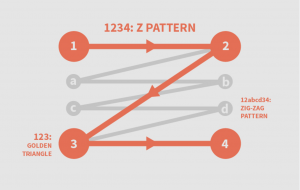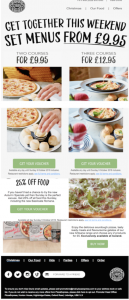Email Marketing
We all receive Junk/spam email (cold email) every day. My inbox is always under attack full of pointless marketing emails from companies trying to either sell me something I have no interest in or gain my attention to click and check out offers and click my way in to purchasing them.
My email address is one of many addresses that are saved on these companies mailing list, trying to inform me about an offer for a limited time only! Come on, this is just a tool used to draw me in to purchasing what they are selling, even if I am not in need of it. Our minds are made to think of purchasing or even checking these offers out, so they are able to lure us in to making impulse purchases without thinking.
So what is the trick to email marketing? You must be thinking why is this so important?
The trick is for organisations to get to know their customers or at least make the emails feel as if they understand their customer needs and mastering the strategy in place to achieve this. They do this well by sending “EXCLUSIVE FOR YOU” offers even though they are forwarded to a thousand others.
As I am able to relate to this, personally I do not open emails from companies unless they grab my attention or feel like they are personally related to something I am interested in.
Emails can be sorted in to categories, the two types of emails are inbound and outbound. Inbound emails are used by organisations to gain customer feedback in order to improve on their services they provide and also find out customer interests, to improve on how they target customers with email marketing and how to make them more personal.
On the other hand, outbounds are cold emails known as spam/junk emails that are not personal to the receiver but just sent to gain click rates and contain third party advertisements. These emails are not legal and have a ban as they are not to be sent within the EU.
Moyle (2014) shows that Big organisations spend a high amount of their marketing budgets on their websites, which are up to 36% of their budgets. This is to make sure the websites are user friendly and work to match their customer needs. However, no matter how much they spend on marketing their websites and trying to gain a bigger market share.
One of the main issues that organisations face and struggle with is the conversion/life cycle of customers, due to this there has been an increase in abandoned shopping carts. These business are facing more and more difficulties to bring back the customers that have items in there online basket in order to increase sales and tackle the issue of the abandoned baskets. The Report published by IBM (2011) stated that over 60% of online shoppers leave their purchases half way or just leave the website after making it to the payment sections and don’t return, forgetting about their abandoned, cart not making a purchase.
Email marketing is seen to have a high return on investment (RIO) as it is seen to be a lot faster, direct to gain a response to engage with customer and shows high investment rate return. As well as being able to target a wide range of customers just from sending one email and not forgetting that it is also free.
Looking at my emails from the start of this blog until now – I have received 7 emails which are not in my interest what so ever!
Analysing patterns- everyone reads thinks differently and their eyes focus to navigate them through the page. When I open emails the pattern I used is a Z-pattern (Zig Zag Pattern) where my eyes look and search the whole page, by looking at all 4 quadrants. This help not miss important information while reading. Shane (2016)
An email which grabbed my attention was from Pizza Express used an engaging subject line’All hail the weekend!’.
This email is short, clear and has a displays a call to action button ‘GET YOUR VOUCHER’ this in order to engage with people and to play with consumer’s minds by using the headline as ‘get together this weekend’ and grab their attention by offering 25% off, two course for £9.95 or three for £12.95. This gets the user to click through to the landing pages to get the offers such as they use ‘get your voucher here’ having the images above this help navigate the eye down to click on and get the voucher. As well as this the email advertises food products that are available on sale this also get people to click and try get them to purchase. After getting you to click on the landing page they are able to get you to find the nearest Pizza express, get you to browse through their menu and even book a table online to make your experience better and not have to wait. The landing page uses the similar colours, imagery and text. This help show consistency which works well and effectively and decrease the drop off rate.
Do you want to read more? Follow me on twitter @Brightondigita1
References
Bring notes on two of these articles:
Ellis-Chadwick, F., & Doherty, N. F. (2012). Web advertising: The role of e-mail marketing. Journal of Business Research, 65(6), 843-848.
Shane (2016) CHINESE USER EXPERIENCE – how we read on the web. Available at: http://daoinsights.com/chinese-user-experience-how-we-read-on-the-web/ (Accessed: 3 November 2016).
Aufreiter, N., Boudet, J. & Weng, V. (2014) Why Marketers should keep sending you emails [Online] <http://www.mckinsey.com/business-functions/marketing-and-sales/our-insights/why-marketers-should-keep-sending-you-emails#> [Accessed 3rd November 2016]
Rospigliosi, A. (2016) ‘Email Marketing’. [Lecture notes] Brighton: University of Brighton Business School, Unpublished
Hernandez, A., & Resnick, M. L. (2013, September). Placement of Call to Action Buttons for Higher Website Conversion and Acquisition an Eye Tracking Study. In Proceedings of the Human Factors and Ergonomics Society Annual Meeting (Vol. 57, No. 1, pp. 1042-1046). SAGE Publications.
Ellis-Chadwick, F., & Doherty, N. F. (2012). Web advertising: The role of e-mail marketing. Journal of Business Research, 65(6), 843-848.

